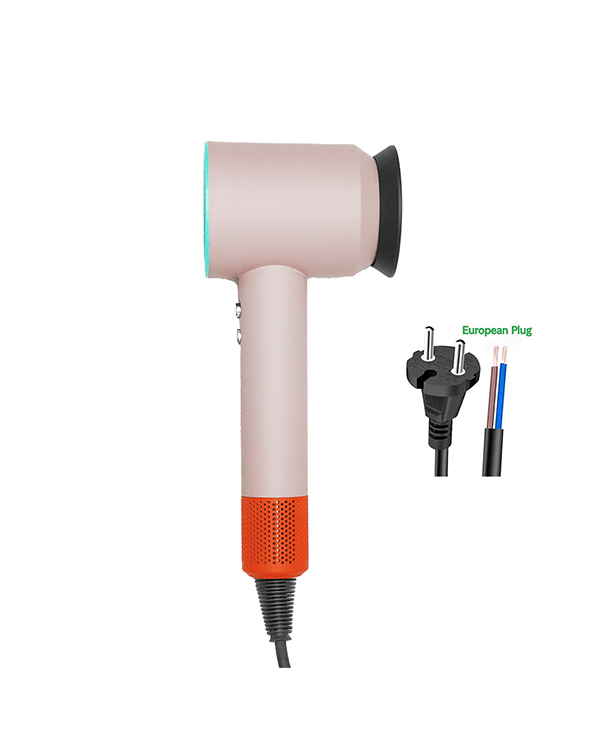Debunking Myths: The Truth About hair dryers and Hair Damage
Hair dryers are a staple in many people’s daily grooming routines, yet they’ve long been surrounded by myths about their potential to damage hair. Some claim that blow-drying leads to split ends, breakage, or even permanent hair loss, while others argue that air-drying is the only safe option. But what does science really say? Let’s separate fact from fiction and explore the truth about hair dryers and hair damage.
Myth 1: Hair Dryers Always Cause Damage
The Truth: The key factor isn’t the hair dryer itself but how it’s used.
Hair damage occurs when excessive heat weakens the hair’s protein structure (keratin) and strips away moisture. However, modern hair dryers with adjustable heat and speed settings allow for controlled drying. Studies have shown that using a hair dryer at a moderate temperature and maintaining a safe distance (6-8 inches from the hair) minimizes damage.
In fact, a 2011 study published in the Annals of Dermatology found that while high heat can be damaging, using a hair dryer at a lower temperature with constant motion causes less harm than air-drying for too long. Wet hair is more vulnerable to breakage, and prolonged dampness can weaken the hair shaft, making it prone to damage when combed or styled.
Myth 2: Air-Drying Is Always Better
The Truth: Air-drying isn’t necessarily safer—it depends on hair type and environment.
While air-drying avoids heat exposure, leaving hair wet for extended periods can lead to:
- Swelling of the hair cuticle, making it more fragile.
- Fungal scalp infections (like Malassezia) due to prolonged moisture.
- Frizz and tangles, especially in humid climates, which increase friction and breakage.
A study in the Journal of Cosmetic Science found that rapid drying with controlled heat is less damaging than letting hair stay wet for hours. The best approach? Blot hair with a microfiber towel to remove excess water, then use a dryer on a low or medium setting.
Myth 3: All Hair Dryers Are the Same
The Truth: Technology matters.
Cheap, outdated hair dryers often lack heat regulation, ionic technology, or ceramic coatings, which distribute heat evenly and reduce frizz. Key features to look for:
- Ionic technology – Breaks down water molecules faster, reducing drying time and heat exposure.
- Ceramic or tourmaline heating elements – Provide even heat distribution.
- Variable heat and speed settings – Allow customization for different hair types.
A high-quality dryer with these features can actually protect hair by minimizing heat stress.
Myth 4: Blow-Drying Causes Hair Loss
The Truth: Normal blow-drying doesn’t cause permanent hair loss.
Hair shedding is a natural process (we lose 50-100 hairs daily). However, excessive heat or aggressive brushing while drying can lead to mechanical breakage, which may mimic hair loss. True hair loss (like androgenetic alopecia) is genetic or hormonal, not caused by styling tools alone.
To prevent breakage:
- Use a heat protectant spray.
- Start drying at the roots and work downward to avoid tugging.
- Avoid holding the dryer too close or in one spot for too long.
Myth 5: You Should Never Use High Heat
The Truth: High heat can be used strategically.
While prolonged high heat is damaging, brief bursts can be useful for setting styles (e.g., curls or volume). The trick is to:
- Use high heat only when necessary.
- Always pair it with a heat protectant.
- Finish with a cool shot to seal the cuticle and add shine.
Best Practices for Safe Blow-Drying
To minimize damage:
1. Towel-dry first – Remove excess water to reduce drying time.
2. Apply heat protectant – Creates a barrier against heat.
3. Use medium heat and keep the dryer moving – Prevents concentrated heat exposure.
4. Finish with cool air – Helps close the cuticle for smoother hair.
5. Don’t over-dry – Stop when hair is 90% dry to avoid brittleness.
Conclusion
Hair dryers aren’t inherently damaging—improper use is the real culprit. With the right techniques and tools, blow-drying can be a safe and efficient part of your hair care routine. The key is moderation, heat protection, and choosing a quality dryer that suits your hair type.
So, next time someone warns you about the “dangers” of blow-drying, you can confidently debunk the myths with science-backed facts!














 Phone
Phone
Comment
(0)